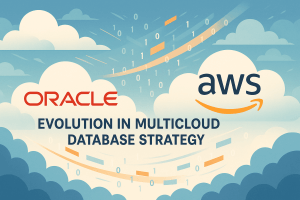Contents
Introduction
A little over a year ago, Wikibon predicted the following regarding the most likely future of the Hyper-V and vSphere: “…believe that VMware’s greatest risk is in the SMB [and] midmarket. Although VMware has attempted to do better in this space, this has been an underserved area and often goes to VMware simply by default and because Microsoft has yet to provide a compelling story. With Hyper-V 3, the story will be there from a feature set perspective, and this will push SMBs to more carefully consider Microsoft as a viable platform for virtualization and private clouds, particularly given some of Hyper-V 3’s SMB friendly features, such as shared nothing migrations that don’t require expensive storage.”
In August, Wikibon released the results of the 2013 virtualization survey, which finds in general that the time of experimentation with different hypervisors is ending, and hypervisor consolidation is starting. Forty-eight percent of the organizations surveyed are strategically settling on a single hypervisor in order to simplify the environment. The survey also indicates that vSphere continues to rule the data center with 76% server penetration, with Microsoft’s Hyper-V the clear second place choice with 14% of market share.
For CIOs, the new survey doesn’t necessarily point to a need to make a major change to existing strategies at the present time, except to say that Hyper-V is becoming a more prominent player in some spaces and may deserve consideration for organizations that are heavily reliant on Microsoft. As for Hyper-V, the survey finds that “the perception of many smaller installations with mainly Microsoft business software is that Hyper-V is now ‘good-enough’ and that the Windows 2012 System Management functionality has seen major improvements in functionality.” This is in line with expectations from a year ago as to how Hyper-V would penetrate the market.
At first glance, this may seem like bad news for Microsoft, but that may not actually be the case. The Wikibon survey identified that just 69% of overall workloads are virtualized today. Respondents did indicate that, within the next 18 months, they plan to have an average of 84% of the environment virtualized. So, expect to see the virtualization market continue to grow in a significant way in the next year and a half.
Responses suggest that VMware’s growth into this expanding space will be 24% in the same time period while other hypervisors will enjoy 86% growth overall. Of course, 24% of vSphere’s current share is quite substantial, so it’s safe to say that VMware doesn’t have much to worry about in the foreseeable future.
Within the next 18 months, we expect to see Hyper-V grow to consume 16% of the hypervisor market while vSphere share will fall to 68%. Again, bear in mind that these numbers assume that the virtualization market will grow substantially in this time, so, while’s vSphere’s actual market share drops, it’s still going to have more installations that it does today. At the same time that just from 14% to 16% for Hyper-V may not seem like much, but, again, when considered in the context of a growing market, it’s actually quite good. In fact, the only real negative that seems to be coming in the next 18 months is for Xen, which is expected to drop from 3% of the market to just 2%.
Let’s do a bit of simple math to put these numbers into context. Let’s pretend that we have 1,000 total workloads inside an organization that is running all of today’s hypervisors in today’s proportions.
Today, 69% of those workloads are running virtually, leaving us with 690 virtual workloads and 310 physical ones. As such, here is a breakdown that shows the real percentage change that we expect to see in workloads in 18 months, assuming that the number of virtual workloads increases to 84%, and we see the expected hypervisor market percentages that the survey results suggest. Please bear in mind that the chart below makes a “single hypervisor” assumption.
While Hyper-V is not expected to see the massive gains that both KVM and Oracle are expected to see, a 39% growth rate is far from poor performance and will help to cement Hyper-V place as second in the market and will in all likelihood help SMBs and small mid-markets boost their faith in the platform and consider it for ongoing production use instead of vSphere.
VDI
One area of interest with regard to Hyper-V appears to be its growing role as a player in the VDI space, which, when one steps back and thinks about it, makes a lot of sense. The Wikibon survey indicates that VDI is one of the primary use cases around Hyper-V. Microsoft’s Remote Desktop Services have long provided organizations with session-based virtualization technology that many organizations used to reduce endpoint costs and simplify overall administration. And, today, Windows Server ships with the full VDI stack ready to go, including Microsoft’s own acceleration technology known as RemoteFX. With Windows’ ability to provide both session level and full endpoint virtualization, Windows and Hyper-V seem to be a good combination with a lot of flexibility as to how applications are delivered to different users. By combining both Remote Desktop Services and VDI into a single deployment, organizations can enable users to take an application-centric approach or a full desktop-based approach based on the tasks they are trying to accomplish.
In addition, Microsoft’s efforts in the cloud arena may be leading to an increase in Hyper-V use for VDI scenarios. User seem to consider Hyper-V as the natural place for VDI implementations from Microsoft and Citrix, with licensing and Microsoft Office 365 services being significant drivers. There is a perception that desktop services integration may be easier under Hyper-V since it keeps the environment fully inside the Microsoft ecosystem.
Given the way that it appears as if vSphere’s market is being somewhat eaten from the bottom, the interest in using Hyper-V starts to make more sense, particularly since smaller shops are often reliant on and have a lot of faith in Microsoft technologies. In addition, SMBs often already have sufficient Microsoft talent either in house or available through existing partners that a Hyper-V deployment can be done with relative ease. Microsoft’s System Center tools also bring some additional benefits to customers that may not be included in a typical View license, such as Configuration Manager, Microsoft’s configuration management service. Such tools are already familiar to many SMBs (many used to use System Center Essentials), and are natural extensions to the VDI project.
Bear in mind that Hyper-V is a free product as well. Of course, System Center management functionality is not free, but System Center is not a hard requirement, even to use many of Hyper-V’s advanced features. This is one key area in which licensing between the vSphere and Hyper-V is very different. In order to use many of vSphere’s advanced features, such as vMotion, a vCenter license is required. In the world of Microsoft, on the other hand, migrations can be performed without having to implement System Center.
When bundled with VMware’s View, vSphere is also free as the enabling technology, but with Microsoft, it may be possible to deploy VDI-based desktops without incurring additional licensing fees beyond what is already included in many volume licensing agreements.
Some continuing licensing challenges
Regardless of the underlying virtualization technology – vSphere, Microsoft, Xen, etc. – there remain some sticky licensing challenges to overcome with VDI, most of which revolve around Microsoft’s Virtual Desktop Access (VDA) license. VDA is a license that enables Microsoft to capture endpoint licensing revenue even from endpoints that don’t run Windows. Here’s how it works: When a company buys a PC – any PC – their Microsoft volume licensing agreement does not provide what is considered a full Windows license. The volume license is simply an allowance to use volume license keys for easier deployment for such purposes as imaging and deployment. Every volume license must be associated with a PC that bears a Windows OEM license. An organization cannot buy “naked” PCs (those without Windows) and then apply their volume license.
When considering thin clients – often used to VDI deployments – many run Linux as the operating system. So, there is no Windows OEM license on that device. VDA is an add-on license that allows Microsoft to continue to get Windows desktop licensing fees for devices that don’t run Windows natively. They get to continue the revenue stream they’ve enjoyed on the desktop side of the equation forever. But, there is an exception: If there is a device covered under a licensing program for which the customer has purchased Software Assurance (SA) from Microsoft, no VDA license is necessary since SA includes rights to VDI. Non-Windows devices cannot be covered under SA and are always subject to a $100 per year VDA licensing fee.
Some hope that Microsoft will eliminate this VDA licensing fee, but given that it provides Microsoft with revenue for every VDI deployment, don’t expect it to go anywhere anytime soon. More organizations are considering VDI and many are considering them in conjunction with BYOD initiatives under which users would be able to use any device they wished. VDA ensures that Microsoft continues to make money, even in a post-PC world.
This is far from being a definitive guide to Microsoft’s complex VDI licensing rules. If you have questions, you should always consult a qualified Microsoft licensing specialist.
A changing landscape
There was a time when Citrix ruled remote desktop computing, but those days seem to be all but over. Today, Microsoft and Citrix continue to enjoy a deep relationship, but newer activities do not seem to be generating as much interest as past ones. Back in 2009, the two companies announced plans to work together to tackle VDI, but since then, there seems to have been little in the way of progress on that front.
Interest in Hyper-V may be observed due to the fact that many smaller organizations have Microsoft licensing contracts with Software Assurance and, as such, are not subject to VDA since they use only Microsoft devices. As these organizations may not have the same skill sets as larger organizations, defaulting to Microsoft is the first choice as the company is a known entity.
Action Item: On the VDI front, an all-Microsoft approach should not frighten CIOs, even those invested in vSphere. Of course, a single hypervisor strategy may continue to be more cost effective and efficient, even though VDI is a very separate use case from traditional server virtualization. Perhaps the most significant area of concern in VDI deployments is licensing. Microsoft’s difficult-to-understand licensing rules make for a maze of options and can increase costs. If not adhered to, organizations are at risk, so watch carefully.



